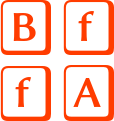The species of pangolin compromise their own order: Pholidota.
by Hannah Storm
Pholi – A folly is something stupid.
Dota – She’s learning phonics at school. This is how she would spell daughter.
He said I was fucking stupid. Ordered me to get rid of it. I cradled my belly’s soft shell as it grew.
‘Pangolin’ comes from the Malay ‘pengguling’, loosely meaning something that rolls up.
Later I stuffed into a rucksack all we needed to survive, hiding our future beneath my bed. I curled up by her cot.
Special glands near the pangolin’s anus secrete a pungent fluid as a defence mechanism.
Now the court toilet smells of the fear of losing my child.
That last night, he came home drunk. I’d not showered for two days between the feeding, burping, changing, rocking, cooking. He hissed at me when I begged him to be quiet.
You smell ripe. He tore at my clothes. Why can’t you make a fucking effort? Pinned me to the bed. Cried when he came. Then she cried too. By the time I had settled her, he was snoring. The room reeked of shame.
Pangolins are nocturnal animals. Their shells made of keratin the same substance as human hair and nails.
In the shower I scrubbed myself raw, let the water sear my scalp. Impossible to feel clean.
The mother curls up around the baby pangolin if she senses danger.
He left for work. Then we left. I clasped her to me, promising he would not hurt us again.
Now I hear my name, calling me to Court.
The endangered pangolin is the world’s most trafficked animal; its body parts are sold as a delicacy or used for their mythical healing properties.
When my daughter is older, I will teach her how to protect herself. One day I will explain what being endangered really means.
About the Author
 Hannah has been a journalist for two decades, travelling the world and witnessing her fair share of love and loss. She writes flash fiction to pay tribute to the people she’s met and places she’s been, and creative non-fiction to process her own experiences. She’s working on a memoir, a flash collection and is editing a novel. Now she is based in the UK with her husband and two children and is the director of a media charity as well as a journalism consultant.
Hannah has been a journalist for two decades, travelling the world and witnessing her fair share of love and loss. She writes flash fiction to pay tribute to the people she’s met and places she’s been, and creative non-fiction to process her own experiences. She’s working on a memoir, a flash collection and is editing a novel. Now she is based in the UK with her husband and two children and is the director of a media charity as well as a journalism consultant.

 Sam Payne lives in Devon, United Kingdom. She has recently completed an MA in Creative Writing and her work has appeared in various places including Spelk, Reflex Fiction and Popshot Quarterly. She tweets
Sam Payne lives in Devon, United Kingdom. She has recently completed an MA in Creative Writing and her work has appeared in various places including Spelk, Reflex Fiction and Popshot Quarterly. She tweets  Emily Harrison is a poet and fiction writer based in London. Her poetry collection I Can’t Sleep ’cause My Bed’s On Fire is published with Burning Eye Books. She lives and teaches in Hackney.
Emily Harrison is a poet and fiction writer based in London. Her poetry collection I Can’t Sleep ’cause My Bed’s On Fire is published with Burning Eye Books. She lives and teaches in Hackney. Stephanie Carty is a writer, trainer and NHS consultant clinical psychologist in Staffordshire, UK. Her debut novella Three Sisters of Stone was published May 2018 with Ellipsis Zine and won Best Novella in the Saboteur Awards 2019. Her fiction has been shortlisted for the Bristol Short Story Award, Aesthetica Creative Writing Award and the Bridport Prize. She was a winner in
Stephanie Carty is a writer, trainer and NHS consultant clinical psychologist in Staffordshire, UK. Her debut novella Three Sisters of Stone was published May 2018 with Ellipsis Zine and won Best Novella in the Saboteur Awards 2019. Her fiction has been shortlisted for the Bristol Short Story Award, Aesthetica Creative Writing Award and the Bridport Prize. She was a winner in 





 With two weeks to go before the end of our 15th Award on June 7th, here’s another fascinating interview in our winners’ series, this time from Simon Cowdroy, second prize winning author in our February award
With two weeks to go before the end of our 15th Award on June 7th, here’s another fascinating interview in our winners’ series, this time from Simon Cowdroy, second prize winning author in our February award